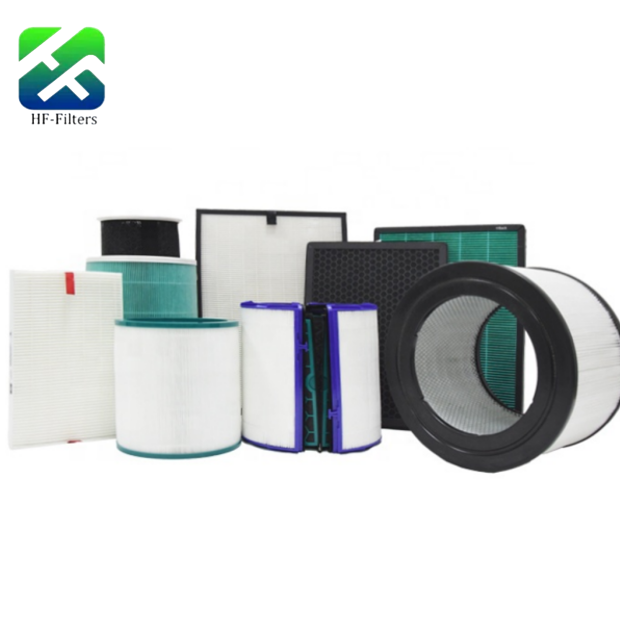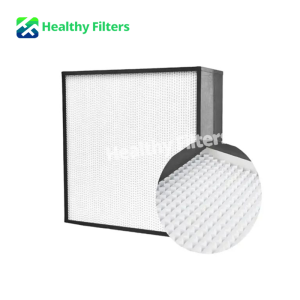Deciding between a full air purifier and just swapping in a HEPA filter feels tricky when you want clean air without wasting cash. You face dust, odors, or allergens daily, and the right pick saves hassle. As someone who’s tested setups in real homes and shops, Healthy Filters catches your eye for practical solutions. Products carry CE, ROHS, and ETL marks, promising reliability. They ship fast from a USA warehouse too. Let’s dive into what suits your wallet and air needs best.

What Makes Air Purifiers Worth the Price?
Air purifiers bundle everything into one unit, handling multiple pollutants at once. You plug it in and forget, but costs add up. Still, for busy spots, the convenience shines.
Built-In Tech for Everyday Use
These units often mix pre-filters, carbon layers, and HEPA for full cleanup. Pre-filters catch big dust with capacities up to 600 grams per square meter. Carbon tackles smells, like benzene at 75% adsorption in some models.
Ongoing Expenses to Consider
Power draws energy, and filters need swaps every 6 to 12 months. Initial resistance stays low at 220 Pa in efficient HEPA types, but electricity bills creep up in large rooms.
Suitability for Whole-Room Coverage
Models handle 500 to 3000 cubic meters per hour airflow. In a 20 square meter office, one unit covers it all.
How Effective Are Standalone HEPA Filters?
Standalone HEPA filters focus on tiny particles without extras. You drop them into existing fans or purifiers. Simpler, cheaper upfront.
Pure Focus on Particle Removal
These trap 99.97% of 0.3 micron bits using glass fiber paper. Deep pleats boost area to 31.6 square meters in big ones. Perfect for pollen or smoke.
Simple Swap-Out Savings
Replacements cost less than whole units. For example, a HEPA filter replacement fits specific models, combining carbon for odors too.

Compatibility with Various Devices
Slide into vacuums, humidifiers, or AC units. Sizes like 610x610x292mm match standard slots. No need for new machines.
When Does a Full Air Purifier Make Sense?
Full units step up when problems pile on. Allergies flare, cooking smells linger, or pets shed everywhere. They manage it all in one go. In a busy family home, one device tackles multiple issues at once. No juggling separate filters.
Tackling Stubborn Indoor Pollutants
Multi-stages hit dust, VOCs, and bacteria. Activated carbon filters remove formaldehyde, with content over 150 grams per square meter. In kitchens, this clears grease fast. Sandwich carbon types hold 3200 grams of dust, keeping air fresh longer.
Benefits of Layered Cleaning Stages
Pre-filter, then HEPA, plus UV sometimes. Efficiency climbs to 99.9995% in ULPA types. You breathe easier in high-traffic homes. Meltblown layers add electrostatic pull for finer capture.
Hands-Off Daily Management
Timers and sensors adjust speed. Low noise in sleep mode. Set it once, and it runs without tweaks. Handy for forgetful days. Auto modes react to air quality changes, saving effort.
Why Might HEPA Filters Win for Some Users?
HEPA alone fits tight budgets or upgrades. You keep your old setup running longer. Targeted fix without overkill. No fancy extras, just solid particle trapping when that’s all you need.
Lower Initial Outlay Options
Just buy the filter. Prices beat full machines. Dust holding hits 1800 grams in V-bank styles, lasting months. For a 610x610x292mm unit, airflow reaches 2000 cubic meters per hour with low resistance. Swap costs stay under new purifier prices by half sometimes.
Enhancing What You Already Own
Boost an old purifier with better media. Meltblown fabrics reach 99.97% at 0.3 microns. Quick upgrade, no trash. Slide in a new pleated layer, and efficiency jumps without ditching the whole box. Glass fiber paper adds strength too.
Reliable Results in Targeted Areas
Place in key spots like bedrooms. Initial pressure under 250 Pa keeps fans happy. In workshops, deep pleated fiberglass handles industrial air. Rated for 3000 cubic meters per hour in big models, they tackle smoke and fine dust without strain.
How Can You Get the Most from Your Pick?
Either choice works better with smart habits. Match to your room, pick quality, and maintain. Simple steps stretch value.
Matching Solution to Room Realities
Measure space first. Small rooms need 500 cubic meters per hour. Big factories go for 3400. Wrong size wastes effort.
Choosing Proven Filter Builds
Look for separators like hot melt glue in mini-pleats. Frames in aluminum resist rust. A deep pleated fiberglass HEPA filter offers H13 rating for HVAC.

Habits That Extend Service Life
Check monthly. Vacuum pre-filters. Washable panels reuse after rinses. In dusty areas, this doubles life.
What Final Tips Help Seal the Deal?
Wrap up by thinking ahead. Portability, future needs, and balance matter. Avoid regrets down the line. A quick checklist now saves headaches later, especially when air quality shifts with seasons.
Weighing Portability Needs
Purifiers move easy but weigh more. Filters slip into bags. For travel or rentals, light wins. A compact 305x610x69mm HEPA folds small for suitcases. Whole units tip the scale at 10 kilos or more, fine on a table but tough on stairs.
Future-Proofing Your Setup
Pick compatible sizes. Standard 595x595mm fits most. As family grows, add units. Stock extra filters upfront; they store flat. When kids bring home more dust, you scale without new frames.
Balancing Features with Practicality
Extra bells like apps cost more. Basic HEPA does the job in clean homes. Sometimes simple is smarter. And check certifications; they matter in real tests. A plain deep-pleat model at 220 Pa initial resistance often outperforms flashy ones in daily grind.
FAQ
Q1: Can a HEPA filter alone clean a whole room?
A: It needs airflow from a fan or unit, but yes in small spaces with circulation. A 10 square meter bedroom sees full turnover in under an hour at 500 cubic meters per hour. Without movement, particles just sit.
Q2: How long do air purifier filters typically last?
A: 6 to 12 months, depending on dust and use; check pressure drop. In city apartments with pets, swap at 8 months when resistance climbs past 400 Pa. Rural spots stretch to a year easy.
Q3: Are full purifiers louder than fans with HEPA?
A: Often similar, but sleep modes keep under 30 dB in good models. A standalone fan with filter hits 35 dB on high; purifiers drop to whisper at night.
Q4: Do HEPA replacements fit any brand?
A: Many do, but measure dimensions; custom cuts available. Standard 610x610mm slots into most HVAC boxes. Off-size? Trim services handle 5mm tweaks.

